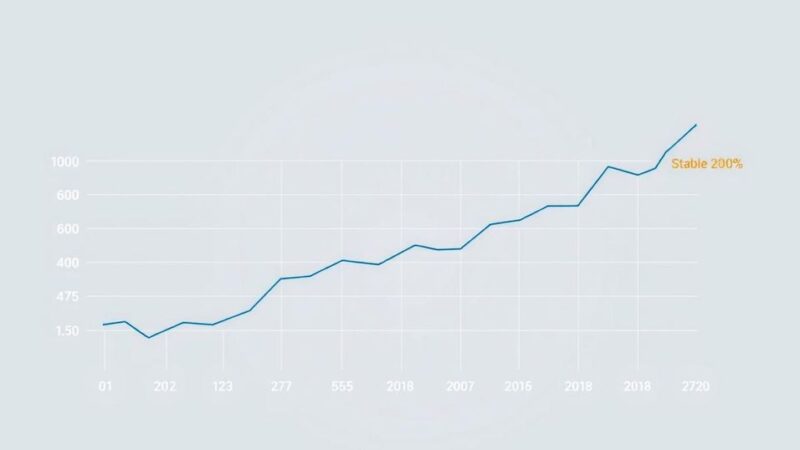- Nigeria’s broad money supply dropped to N119.01 trillion in May.
- Monthly decrease recorded is 0.25 percent compared to April.
- Year-on-year growth showed a 19.9 percent increase from 2024.
- Net foreign assets decline hints at a weakened external position.
- M2 and M1 both saw reductions amid tightening financial conditions.
Overview of Money Supply Trends in Nigeria
Nigeria’s broad money supply has seen its second decline this year, registering a drop to N119.01 trillion in May 2025, according to fresh data released by the Central Bank of Nigeria (CBN). This represents a decrease of N292.75 billion or 0.25 percent from April’s figure of N119.30 trillion. The initial dip occurred in February, when money supply fell from N110.94 trillion in January to N110.32 trillion, indicating a potential trend worth monitoring.
Year-on-Year Growth Signals Monetary Expansion
Even with this slight month-on-month decline in May, the money supply is hovering around record highs, a sign that earlier liquidity surges and ongoing monetary policy adjustments are still impacting the economy. Year-on-year analysis, in fact, shows a much more commanding increase — broad money supply expanded by N19.77 trillion from N99.24 trillion in May 2024, which is a notable 19.9 percent growth. These numbers suggest a substantial expansion in monetary terms over the last year, marking a rapid increase in liquidity that continues to reverberate across Nigeria’s financial landscape.
Shifts in Liquidity Structure: Domestic vs. Foreign
A deeper dive into the liquidity structure reveals a significant shift. Net foreign assets dropped sharply from N49.87 trillion in April to N45.81 trillion in May, reflecting a decline of N4.05 trillion or 8.1 percent. This suggests a weakening in Nigeria’s external asset position, possibly due to a mix of drawdowns on foreign reserves and reduced foreign inflows. In contrast, net domestic assets experienced an increase from N69.43 trillion to N73.19 trillion during the same period, reflecting a growth of N3.76 trillion or 5.4 percent, which somewhat cushioned the effects of the falling foreign assets.
Further Details on M2 and M1 Declines
Moreover, the contraction isn’t just limited to broad money supply metrics; it extends to the intermediate measure known as M2, which fell marginally from N119.28 trillion in April to N118.99 trillion in May, indicating a decline of N283 billion, or 0.24 percent. This downward trend in M2 aligns with the broader tightening sentiment in the financial ecosystem. Similarly, narrow money, referred to as M1, which includes currency in circulation and demand deposits, also saw a drop, down from N41.00 trillion to N40.38 trillion. The N624.5 billion or 1.5 percentage points decline in M1 suggests less liquid cash available within the economy; however, it remains significantly higher than last year’s figure.
Insights on Year-on-Year Liquidity Surges and Foreign Inflows
Despite the dire statistics for May, comparisons with the previous year show that M1 still sits significantly higher than a year ago, as narrow money was recorded at N33.38 trillion in May of 2024, leading to a 20.9 percent year-on-year gain. This suggests that liquidity is still relatively ample, even though the Central Bank of Nigeria is taking measures to curb it. Year-on-year data confirms a meteoric rise of almost N20 trillion in total money supply (M3) between May 2024 and May 2025, particularly driven by an increase in net foreign assets, which surged from N15.34 trillion to N45.81 trillion—a staggering rise of over 198 percent, likely a result of better financing conditions and increased oil revenues.
Monetary Policy Impacts on Domestic Liquidity
But here’s the catch: while foreign assets soared, domestic liquidity took a hit. Net domestic assets took a tumble, down by N10.71 trillion from N83.90 trillion to N73.19 trillion. This decline could indicate a credit tightening scenario or possibly a response to the government’s borrowing strategies, alongside the CBN scaling back its claims on the financial system. High Monetary Policy Rates and active open market operations indicate that the apex bank is indeed tightening its monetary strategy, and the recent decline particularly in the more liquid forms of money hints that these measures are beginning to take effect.
Future Outlook: Challenges Ahead for CBN
Looking ahead, the contraction noted in May raises questions: will this downturn continue into the second half of the year? It really boils down to how the CBN handles liquidity amidst fiscal pressures and shifts in exchange rates. The future configuration of Nigeria’s money supply hinges on a delicate balancing act between stimulating the economy and controlling inflation through effective monetary policy.
In summary, Nigeria’s money supply has experienced a significant second contraction in May 2025, indicating complex dynamics between foreign and domestic liquidity. Despite this, year-on-year growth remains strong, showcasing an ongoing trend of monetary expansion. Monitoring how the Central Bank manages liquidity in the face of various pressures will be crucial as we move through the rest of the year.






